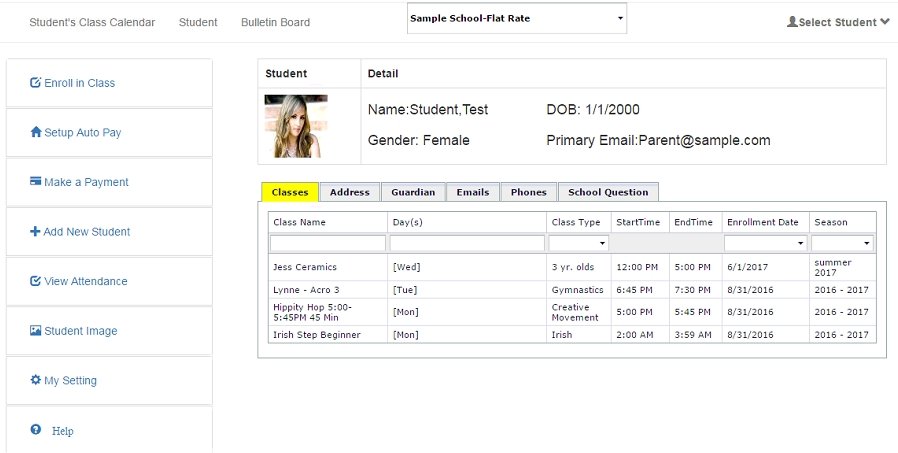The class rank comes from dividing the number of students enrolled in the same grade as you and multiplying that by 100. Subtract that number from 100, and you arrive at your unique class rank.
How to calculate class rank?
The class rank comes from dividing the number of students enrolled in the same grade as you and multiplying that by 100. Subtract that number from 100, and you arrive at your unique class rank. How to Calculate a High School Cumulative Average to a Grade Point ...
What does your class rank say about your high school performance?
It gives the professionals a chance to look at how you have performed while in high school. College admissions officers can use a student’s class rank to assist them with determining how well the student did within the same group of peers from the same environment and among the same faculty.
Does class rank matter when applying to college?
But the class rank is a small portion of what most college admissions officers actually look at when considering a student for acceptance. The GPA, ACT and SAT scores along with the class rank status, any personal essays, potential in-person interviews and the weight of extracurricular activities can affect a student’s acceptance.
What do college admissions officers look for in a class rank?
College admissions officers can use a student’s class rank to assist them with determining how well the student did within the same group of peers from the same environment and among the same faculty. But the class rank is a small portion of what most college admissions officers actually look at when considering a student for acceptance.

How do I found out my class rank?
In order to find your class rank, first check your most recent report card or high school transcript. Your class rank should be there, usually near the bottom of the page. You should be able to see what your class rank is and how many people are in your class.
How do you see your class rank on focus?
To view report card grades click on “My Child” tab, scroll down to Final Grades, GPA, & Class Rank.
How do I find my class rank on PowerSchool?
On the Start Page, click System Reports under the Reports heading on the left toolbar. 2. Scroll down the page and click Class Ranking under the Grades and Gradebooks section.
How do I find my class rank Aspen student?
Click the Transcript side-tab.Click the year in the row of the grade you want to view.View the class information and a summary of the final grade at the top of the page.At the bottom of the page, you can view all the grade s and comments earned in the class.More items...
What is a good class rank?
A good class rank is a high class rank, no doubt. Simply put, the closer you are to #1, the better. However, colleges and scholarships do not generally have absolute cutoffs based on class rank. Instead, it is a general datapoint that will be helpful for them to understand your overall high school performance.
How can I be top 1 in class?
To achieve the first rank in your class, you will have to stay disciplined and study hard throughout the year. Take part in class activities and do all of your homework on time, including reading assignments. Organize your study time, test yourself, and eliminate distractions that will reduce your productivity.
What does class rank on Powerschool mean?
Use class rank to determine the order of students when sorted by grade point average (GPA). For example, the student with the highest GPA ranks at the top of the class. Since class rank calculates based on GPAs, the appropriate GPA calculation methods must exist before determining class rank.
Is class rank based on weighted GPA?
Schools may choose to calculate class rank using either weighted or unweighted grades. Unweighted class rank generally uses a standard 0 to 4.0 scale (though some schools opt for 0-100% grades), and every A contributes equally to rank no matter the difficulty of the course.
What is considered a good GPA?
Most commonly, students graduate cum laude (Latin for "with praise") when they earn a 3.5-3.7 GPA, magna cum laude ("with great praise") when they earn a 3.7-3.9 GPA, and summa cum laude ("with highest praise") when they earn a 3.9 GPA or higher.
Does Aspen Show your GPA?
To view GPA results: Log on to the School view. Click the Grades tab. On the GPA side-tab, click Results. The page displays the results of the last Grade Point Averages report run.
How do I find my GPA on Aspen CPS?
Log on to the School view. Select Grades > GPA. On the Reports menu, click Grade Point Averages. The Grade Point Averages pop-up appears.
How do I know if I am in the top 10 of my class?
Schools calculate a student's class rank by taking their GPA and assessing it in relation to individuals from the same graduating class. If your grade has 100 students, and your GPA is better than 90 of them, then you are ranked number 10 and you're in the top 10 percent of your graduating class.
What is my class rank in college?
Your class rank measures where you stand academically compared to others in your graduating class. For example, if you have a GPA of a 3.7 and your friend has a GPA of 3.8, your friend will rank higher than you do. Class rank may be used as a number (such as 6th in a class) or as a percentile (top 25% of a class).
Do universities rank students?
Some colleges that used to rely on class rank now use SAT® scores and GPA. Most large state universities, however, still require applicants to report class rank (as do many scholarship programs) and rely on it to help sort through the high volume of applications received.
How is valedictorian chosen in college?
The most common method of selection is typically based upon the highest grade point average. Some institutions confer the title on the class member chosen to deliver the final graduation address, regardless of the speaker's academic credentials.
How to find class rank?
The class rank comes from dividing the number of students enrolled in the same grade as you and multiplying that by 100. Subtract that number from 100, and you arrive at your unique class rank.
What does class rank mean in college?
But the class rank is a small portion of what most college admissions officers actually look at when considering a student for acceptance. The GPA, ACT and SAT scores along with the class rank status, any personal essays, potential in-person interviews and the weight of extracurricular activities can affect a student’s acceptance.
Why do colleges use class rank?
College admissions officers can use a student’s class rank to assist them with determining how well the student did within the same group of peers from the same environment and among the same faculty.
Is it good to present your class rank?
Once you have your class rank and it is high, it is a good idea to present it along with all of the other information that the institution is asking for. It says a lot about how you perform within a peer group and can be a positive sign to college admissions officers.
Is GPA a barometer of class rank?
A GPA is a wonderful barometer of your talents, but it is not your class rank, as is often incorrectly thought. The entire academic record from the last semester gets tallied in a mathematical combination to arrive at the class rank. If you had a hard semester but bounced back in the latest term your class rank will reflect that.

Popular Posts:
- 1. berkhamsted parent portal
- 2. isu parent portal login
- 3. aeries parent portal tracy
- 4. lex 5 parent portal
- 5. mcnair parent portal
- 6. keuka college parent portal
- 7. tome school parent portal
- 8. millard public schools parent portal
- 9. child support parent portal
- 10. mission vista high parent portal